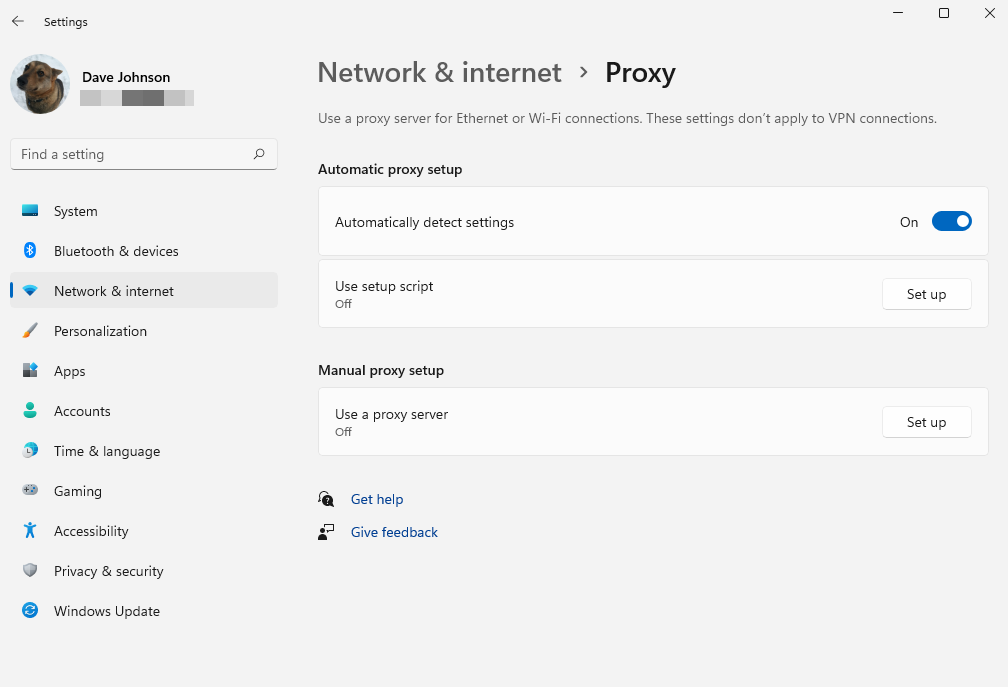Bloom Productions/Getty Images
- A 504 gateway timeout error is an error that arises when a website server times out trying to contact another server.
- There are many possible causes, and they are generally at the website end of the connection.
- There are several ways you can try to resolve 504 gateway errors on your own site or on other sites.
By its very nature, the internet is an interconnected network of computers, and that means you can sometimes encounter connectivity issues if parts of the network don't behave properly. It's not uncommon, for example, to encounter a 504 gateway timeout error, which keeps you from being able to access the content of a website.
What is a 504 gateway timeout error?
A 504 gateway timeout error means that the server you're trying to reach didn't receive a timely response from another server it relies on to display the website. Most of the time, this generally means that one of the servers is misbehaving or misconfigured in a way that the website server "times out" waiting for a response from the other computer and so it displays an error instead of the website that was requested.

Dave Johnson
This is a fairly generic error message, and that means it can happen on any platform — you can see a 504 error in any web browser, on any computer, and it appears on mobile devices and within programs that rely on an internet connection. That also means the exact appearance of the error might vary, but it'll usually include the 504 code to indicate the nature of the problem.
504 gateway timeout causes
When you see a 504 gateway timeout error, the overall problem is pretty easy to understand, but that simple explanation doesn't explain why the timeout error is happening. There are a lot of possible root causes — here are the most common ones:
- There's a network connectivity error. It takes many network connections to successfully show a website in your browser, including modems, routers, network switches, cabling, and more. If there's a problem between any two devices, it can result in a 504 error.
- There is a server connectivity problem. Most websites are hosted on servers maintained by third-party providers, and if the server is offline because of a hardware problem or maintenance, it might generate a 504 error.
- There was a recent IP address or DNS server change. If the website's server recently changed IP address, it might take some time for the DNS server address to update. Because browsers find websites using a DNS server lookup, this can cause a 504 error until the update is complete.
- The server's firewall or other settings are misconfigured. There might be any number of basic configuration errors, especially in the server's firewall, designed to prevent malware and intrusions by hackers.
- There might be a problem with the user's computer or network. Most of the time, 504 errors are a problem at the website server's end of the connection. But on rare occasions, the user's computer or network connection might be misbehaving. If this is the problem, you'd generally experience a connection error with every website you try to reach, not just one.
How to get rid of a 504 gateway timeout error on a website you're visiting
If you can't reach a website because of a 504 gateway timeout error, try reaching other websites. If you only have trouble at just one website, the problem is almost certainly at the server and beyond your control. If you can reach the site's administrator, you can inform them about the problem, but otherwise you'll just need to wait for it to be fixed.
If you see a 504 error at multiple websites, the problem is more likely to be at your end of the connection. There are some things you can try to resolve the issue:
- Close and re-open the web browser, or restart your computer. Then try reaching the problematic websites again.
- Reboot your network modem and WiFi router. Turn off both devices, wait at least two minutes, and then turn them back on. Start with the network modem and then, after it is fully connected, turn on the WiFi router and wait for it to make a solid connection.
- Change your DNS server. This is usually configured by your internet service provider, but it's possible to manually choose a different DNS server.
- Turn off your proxy server (or verify its settings). In the vast majority of situations, your computer should not be using a proxy server to connect to the internet. But if your computer is misconfigured or malware has configured your computer to connect through a proxy server, you can try to turn it off. In Windows, click Start and then Settings. In the Settings window, search for "proxy" and click Change proxy settings. Here you can turn off the proxy server or fine-tune the settings.

Dave Johnson
How to fix 504 gateway timeout errors on your own website
If you own or manage a website that is suffering from its own 504 error, there are a handful of troubleshooting steps you can take to solve the problem.
- Update your DNS server. If you've recently changed your site's IP address, you may need to update your DNS server. Changes to the DNS can take several hours to process, and you might generate 504 errors in the meantime.
- Fix your firewall settings. You might have a faulty firewall configuration which is preventing your server from communicating properly. To test this, you can temporarily disable the firewall completely to see if that resolves the issue.
- Check for other connectivity issues. This can be caused by problems with your server, router, network switch, or system maintenance.
- See if there are other configuration issues. WordPress-based websites, for example, are susceptible to corrupted databases. You might need to run the database repair tool in WordPress's administrator dashboard.
Read More
By: [email protected] (Dave Johnson)
Title: How to fix 504 gateway timeout errors, the common message you receive when a webpage won't load
Sourced From: www.businessinsider.com/guides/tech/504-gateway-timeout
Published Date: Mon, 07 Nov 2022 18:21:05 +0000
Did you miss our previous article...
https://trendinginbusiness.business/politcal/my-hands-were-tied-sam-bankmanfried-breaks-his-silence-days-after-the-dramatic-collapse-of-his-crypto-exchange
.png)





